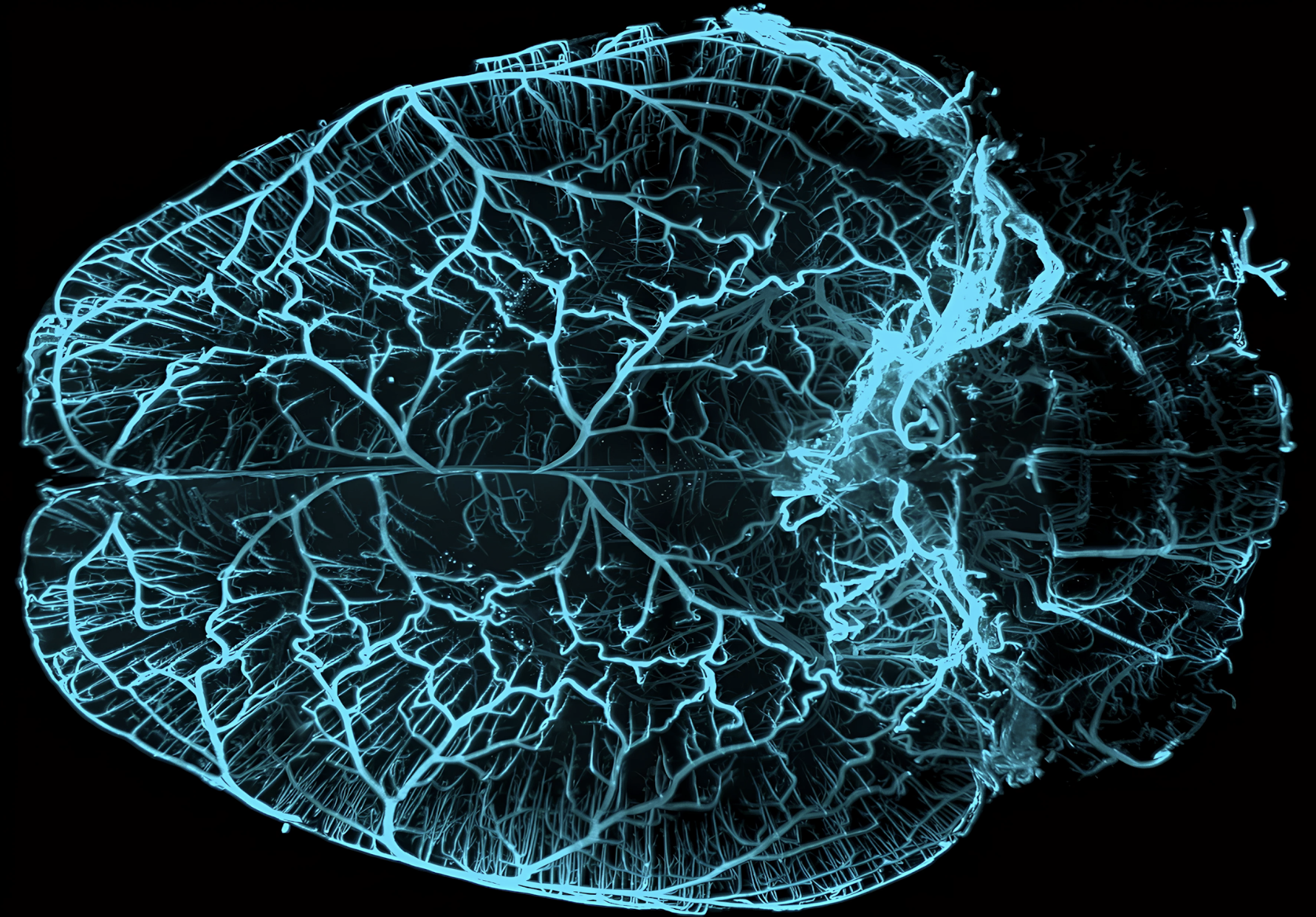
Institut du Cerveau
Myriam Spajer
Myriam Sapjer révèle le réseau vasculaire du cerveau grâce à la microscopie Light Sheet. Chaque vaisseau trace un chemin vital, dont l’altération peut affecter le développement, l’équilibre… et jusqu’à la pensée.
AVC
.png)
Glioblastome ; Institut du Cerveau
Yesim Guner
Yesim Guner nous plonge ici dans une vision en profondeur d’un cerveau atteint d’un glioblastome naissant. Les vaisseaux sanguins dessinent un réseau dense, tandis que les premières cellules tumorales s’infiltrent silencieusement. Un instant suspendu, capté avant que le mal ne se propage.
Cancer du cerveau
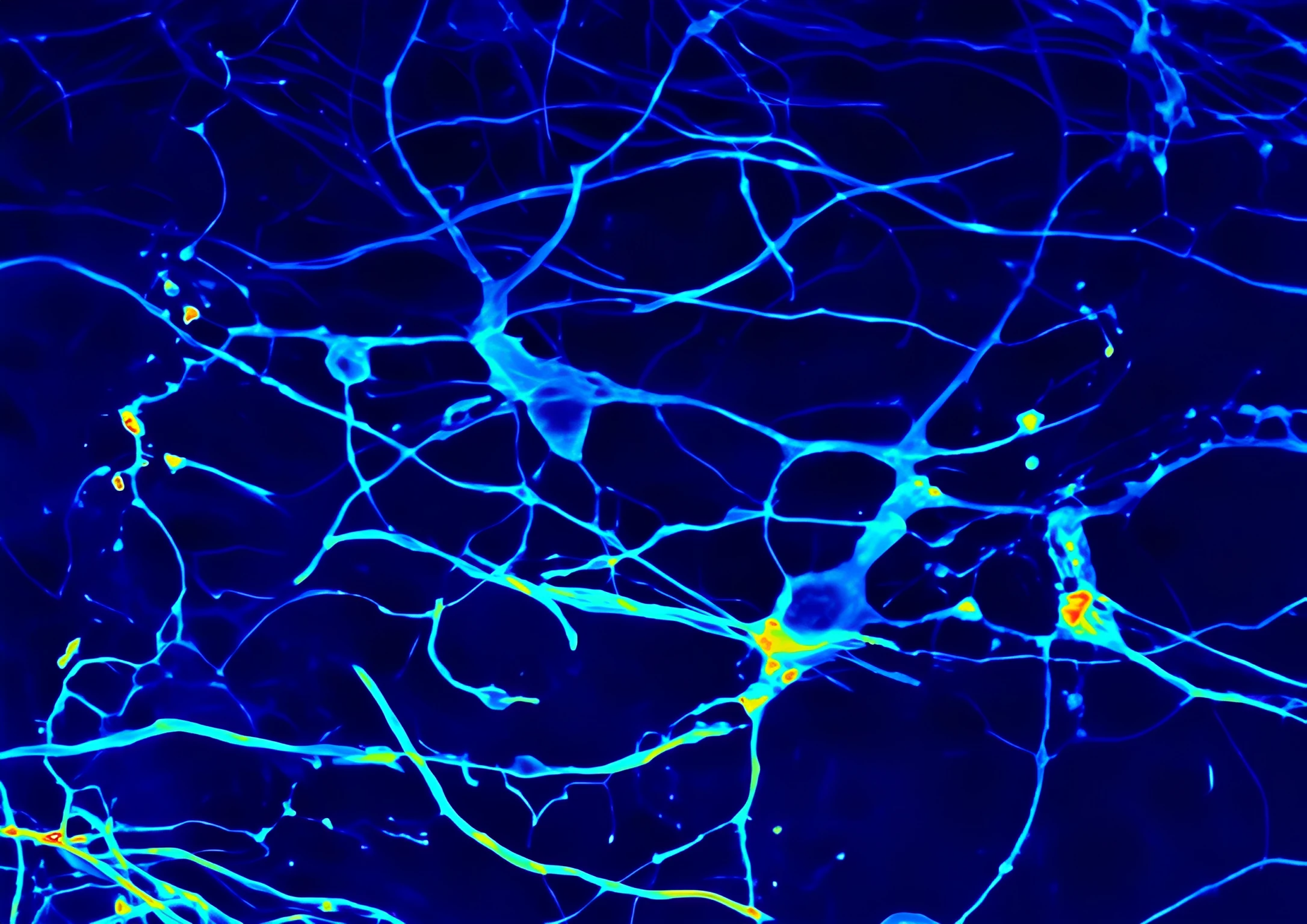
Maladie d'alzheimer ; Institut du Cerveau
Elodie Martin
Elodie Martin expose ici les astrocytes, cellules de soutien du cerveau, dans un modèle de maladie d’Alzheimer. Leurs prolongements forment un maillage dense, mais dans la pathologie, leur activité se dérègle, amplifiant l’inflammation et désorganisant l’équilibre neuronal.
Maladie d'alzheimer
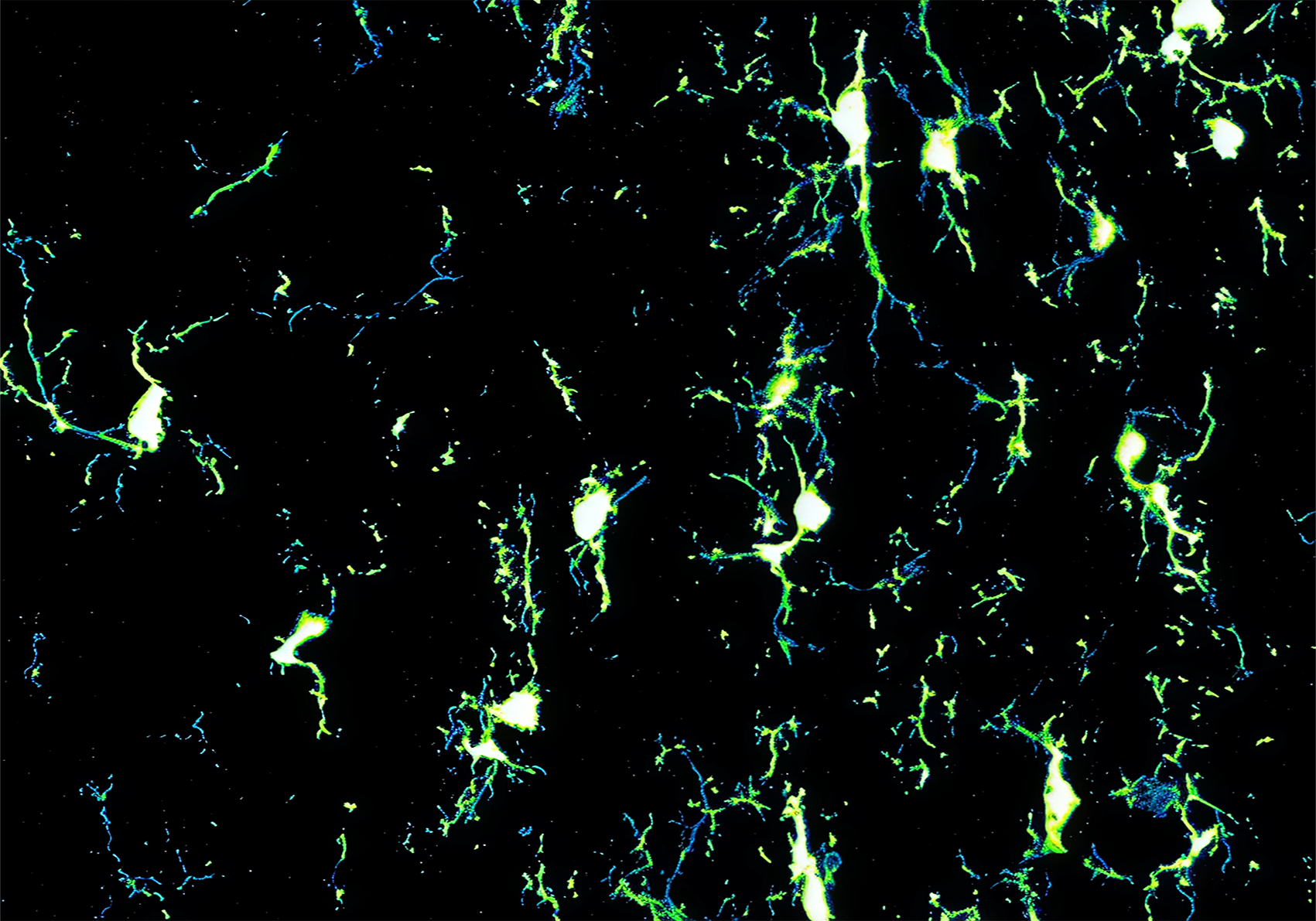
Réparation dans la sclérose en plaque ; Institut du Cerveau
Clément Perrot
Clément Perrot révèle la microglie dans la moelle épinière, étendant ses fins prolongements. Sentinelles du système nerveux, ces cellules patrouillent sans relâche. Au moindre signal, elles changent de forme, prêtes à réparer, défendre, ou dérégler.
Sclérose en plaque

Maladie d'Alzheimer ; Institut du Cerveau
Jean David Randrianaly
Jean David Randrianaly vous invite à observer les premiers signes invisibles de la maladie d’Alzheimer. Dans cette coupe de cerveau, les dépôts amyloïdes scintillent en jaune, marquant les régions fragilisées bien avant les premiers oublis.
Maladie d'Alzheimer
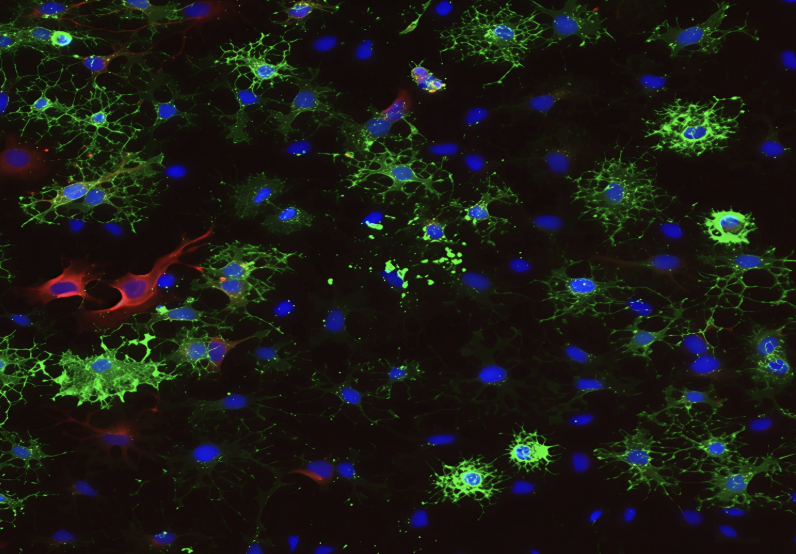
Génétique et développement des tumeurs cérébrales ; Institut du Cerveau
Elisa Popa
Elisa Popa vous ouvre une fenêtre sur le dialogue silencieux entre les cellules gliales. Dans cette image, vous explorez comment l’équilibre entre soutien, signalisation et inflammation peut basculer, bien avant les premiers signes visibles.
Sclérose en Plaque
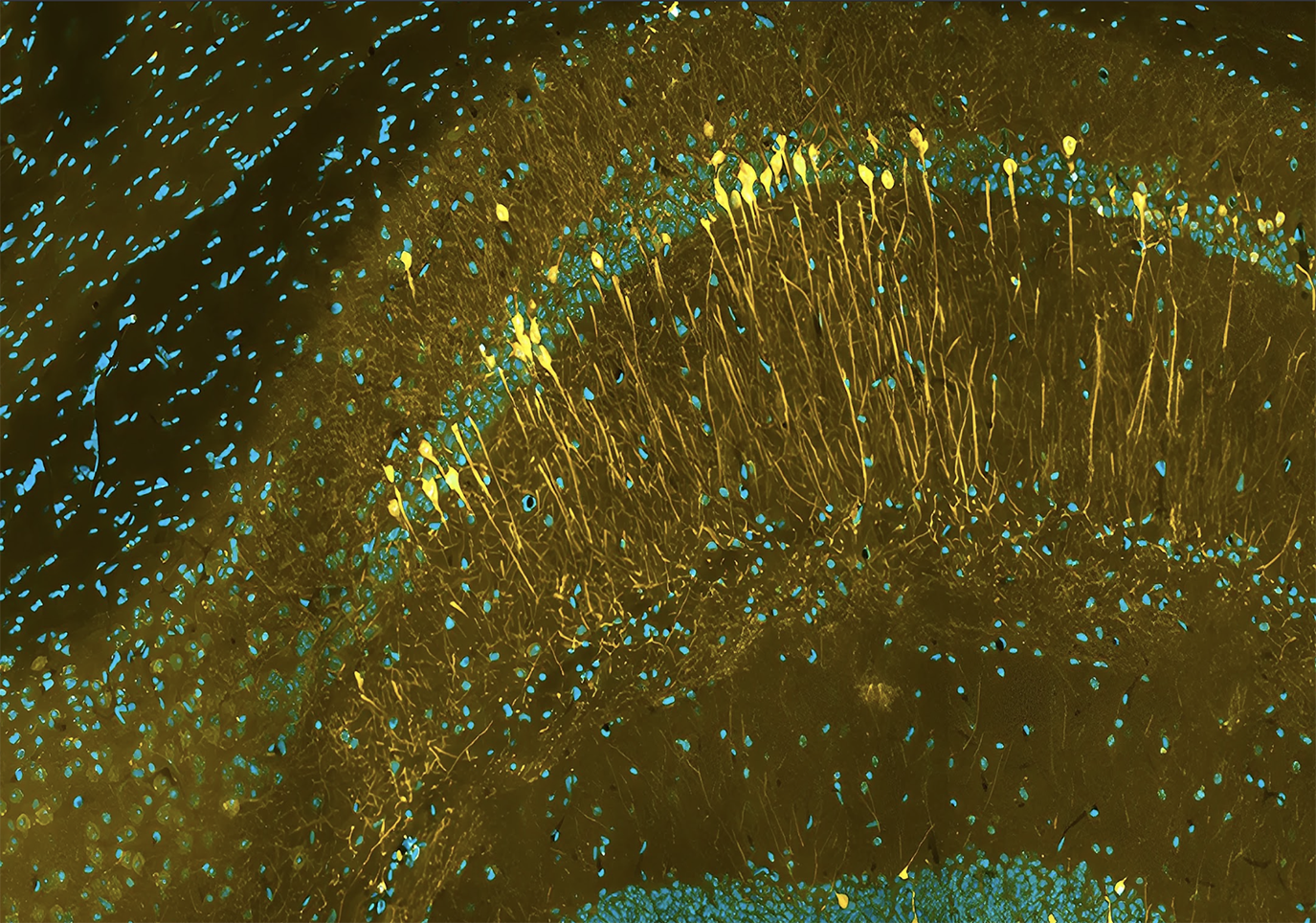
MIND : Métabolisme, Immunité et Neurodégénérescence ; Institut du Cerveau
Julie Pilon
Julie Pilon capture l’hippocampe en construction. Les neurones s’alignent, tissent leurs réseaux, sculptant les futurs circuits de la mémoire. Mais un déséquilibre précoce peut déjà y inscrire les prémices de la crise.
Développement cérébral
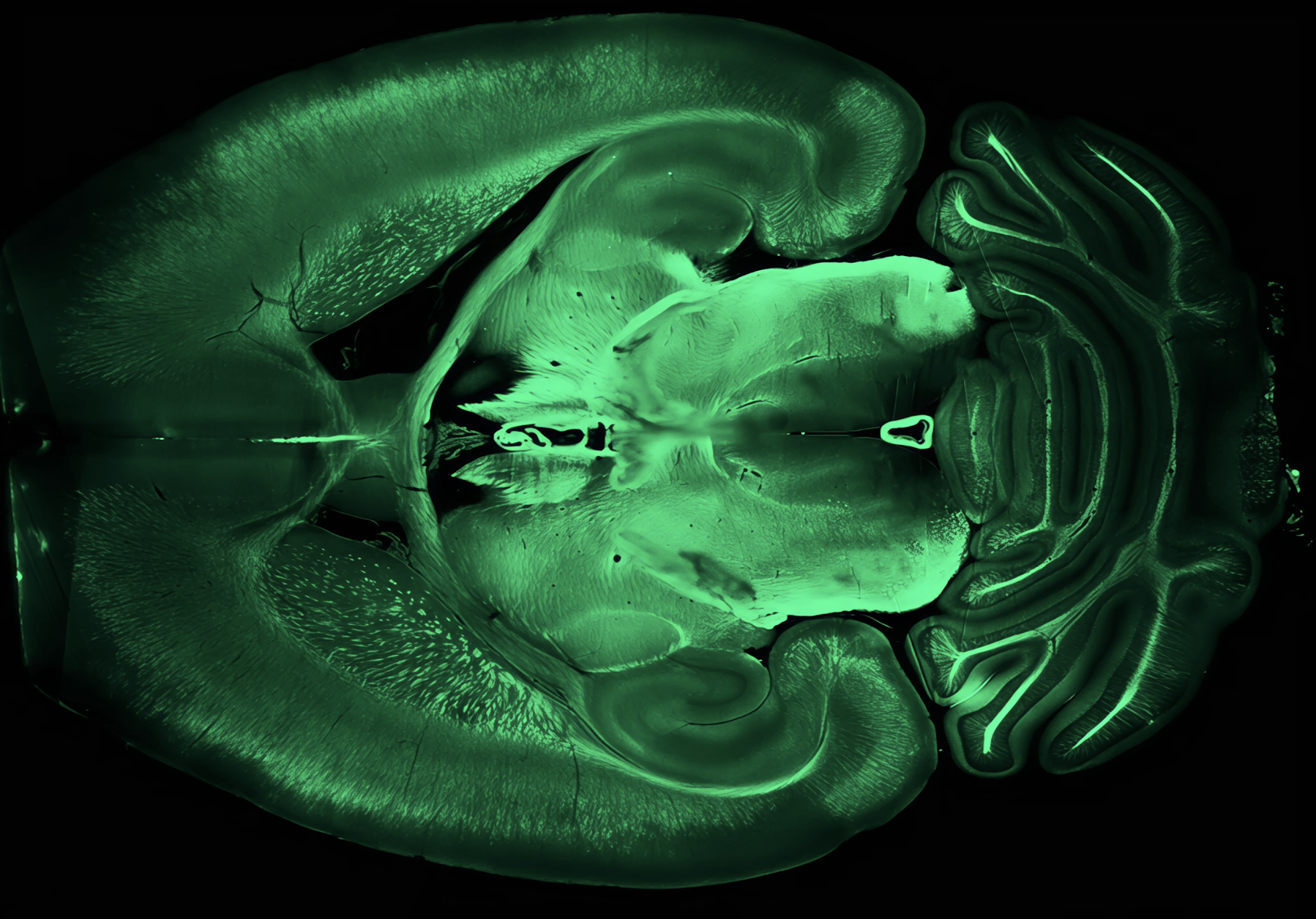
Réparation dans la Sclérose en Plaque ; Institut du Cerveau
Tala Karam
Tala Karam cartographie les grandes voies myélinisées du cerveau. En vert, la myéline trace les réseaux de l’influx nerveux. Leur altération, silencieuse, peut désorganiser les circuits et freiner la pensée.
Slcérose en Plaque
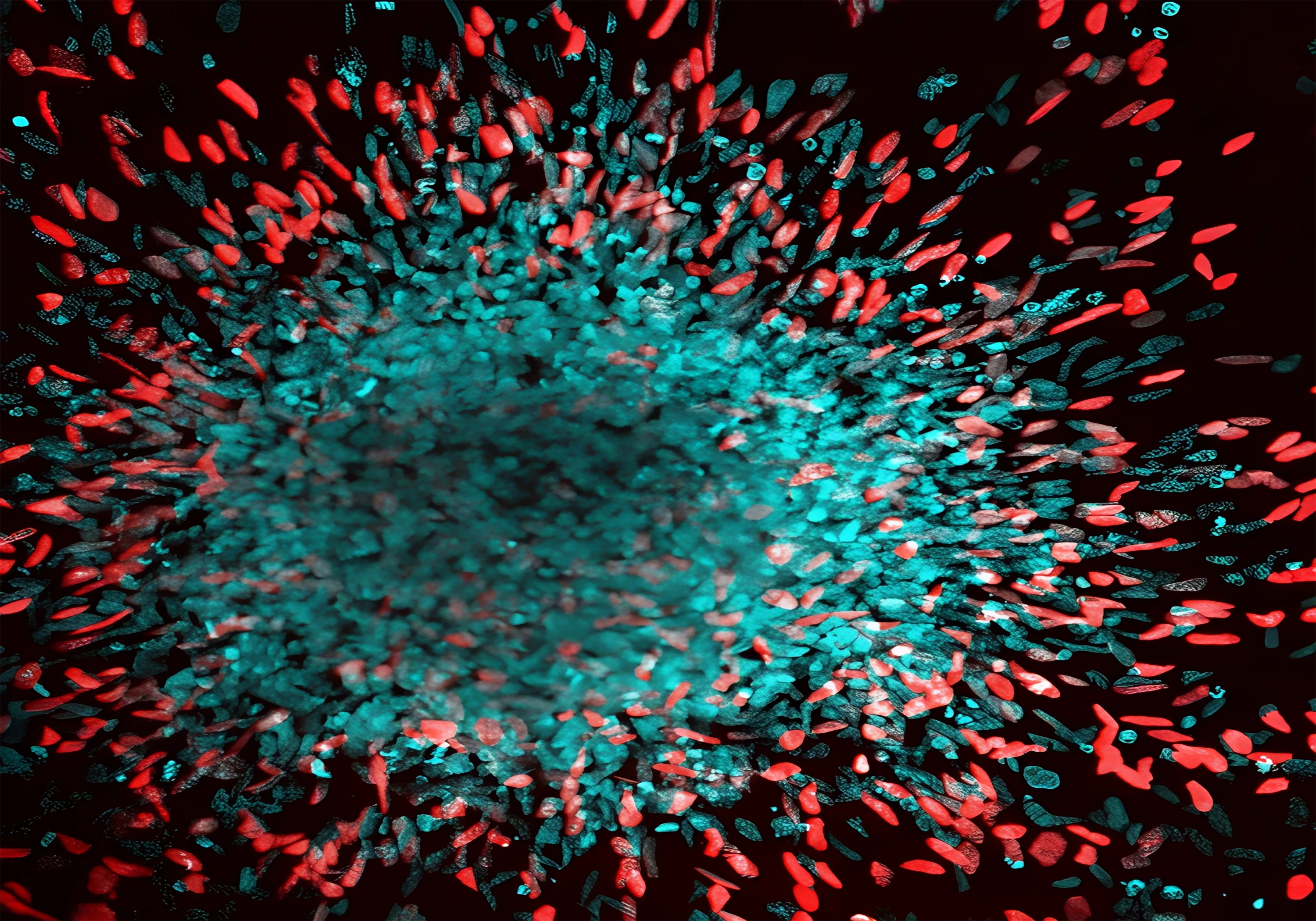
Génétique et développement des tumeurs cérébrales ; Institut du Cerveau
Yvette Hayat
Yvette Hayat capture la cohabitation troublante entre neurones et cellules tumorales. Face à l’infiltration du gliome, les circuits se désorganisent, comme si le cancer redessinait silencieusement le langage du cerveau.
Cancer du Cerveau
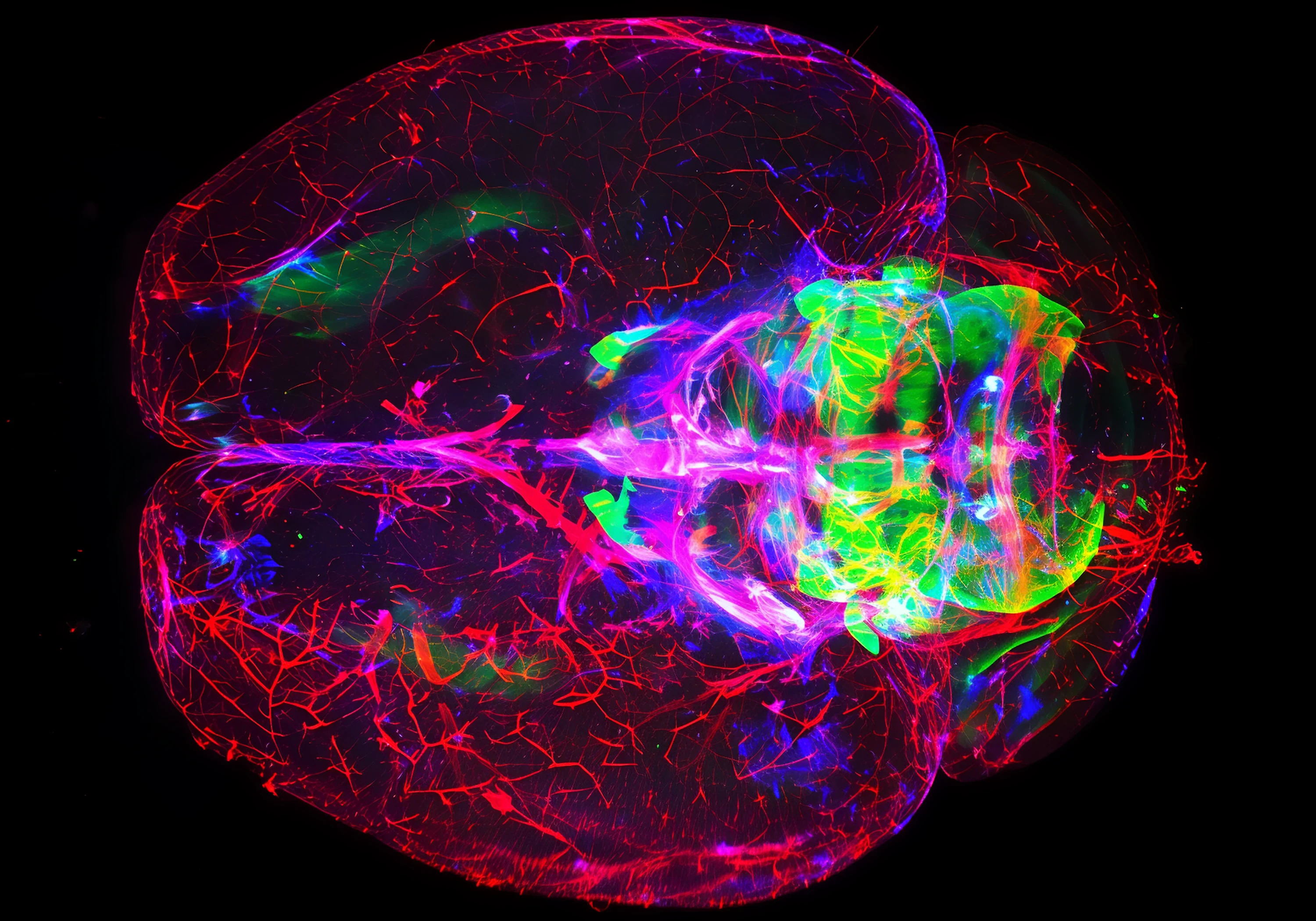
Réparation dans la Sclérose en Plaque ; Institut du Cerveau
Tala Karam
Tala Karam dévoile un enchevêtrement précis de vaisseaux, de myéline et de cellules gliales. Ce tissage tridimensionnel révèle l’équilibre fragile entre irrigation, signal et réparation, un équilibre que la maladie peut rompre en silence.
Sclérose en plaque
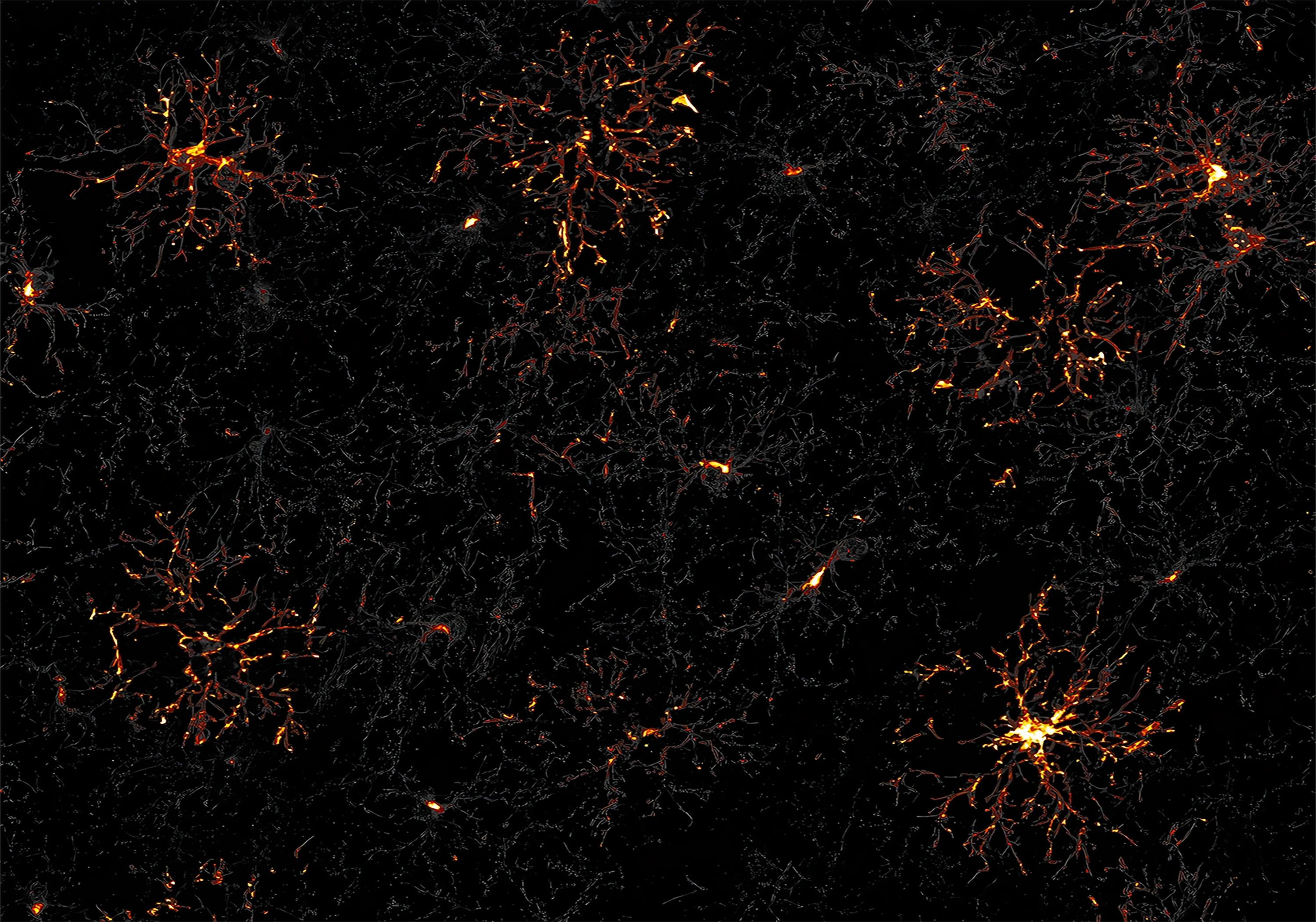
Réparation dans la Sclérose en Plaque ; Institut du Cerveau
Elodie Martin
Élodie Martin révèle l’ombre protectrice des oligodendrocytes. Dans cette image, vous découvrez ces cellules qui enveloppent les neurones pour accélérer l’influx nerveux. Lorsqu’elles échouent, comme dans la sclérose en plaques, la communication cérébrale vacille.
Sclérose en Plaque
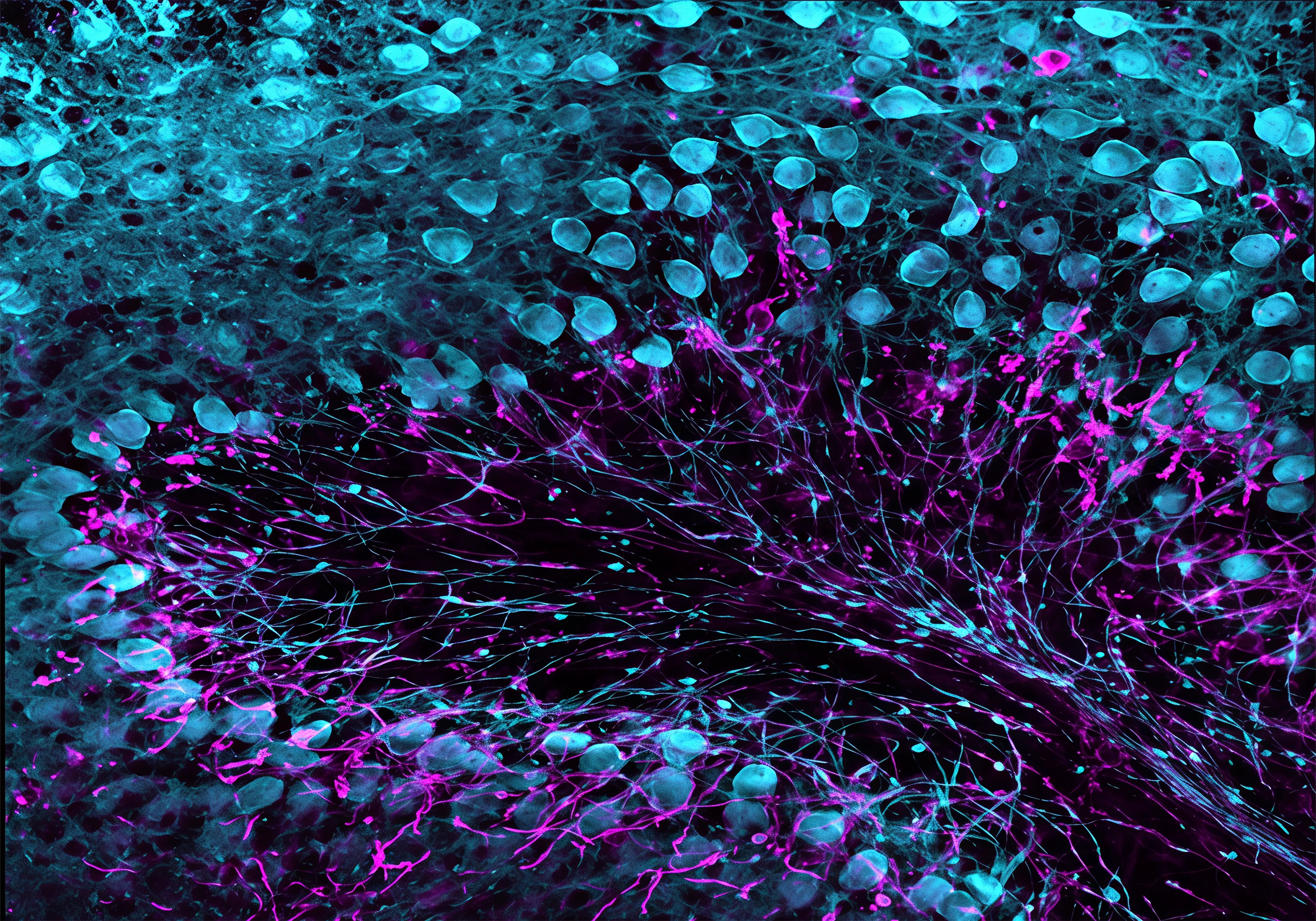
Réparation dans la Sclérose en Plaque ; Institut du Cerveau
Clément Perrot
Clément Perrot révèle l’architecture du cervelet : cellules de Purkinje et fibres myélinisées y orchestrent la précision du mouvement. Une symphonie cellulaire qui vacille dans la sclérose en plaques.
Sclérose en Plaque
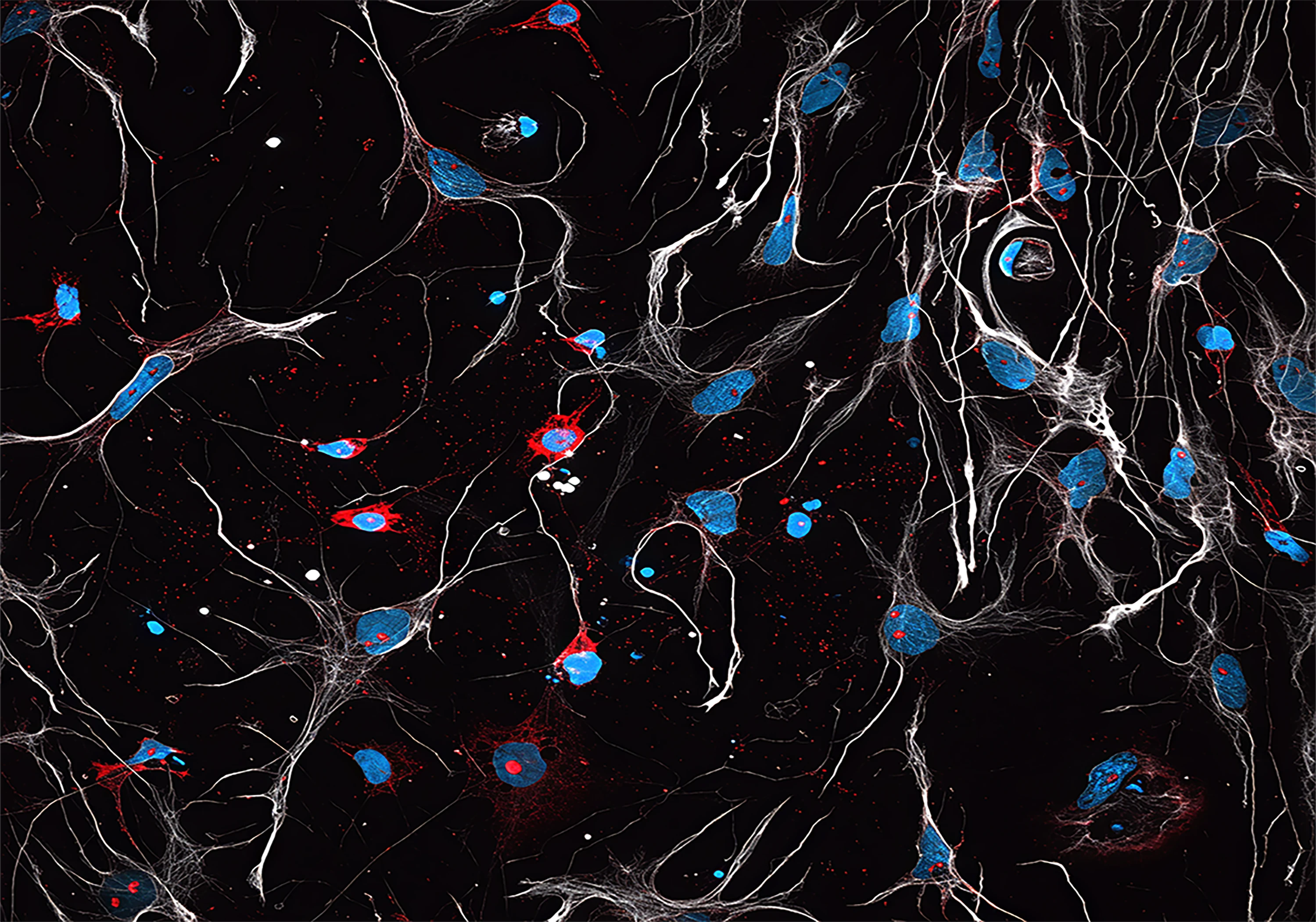
Réparation dans la Sclérose en Plaque ; Institut du Cerveau
Noémie Frère
Noémie Frère dévoile l’harmonie entre astrocytes et neurones au cœur du tissu cérébral. Cette interaction subtile structure le développement du cerveau — et vacille dans certains troubles neurologiques.
Développement cérébral / Autisme
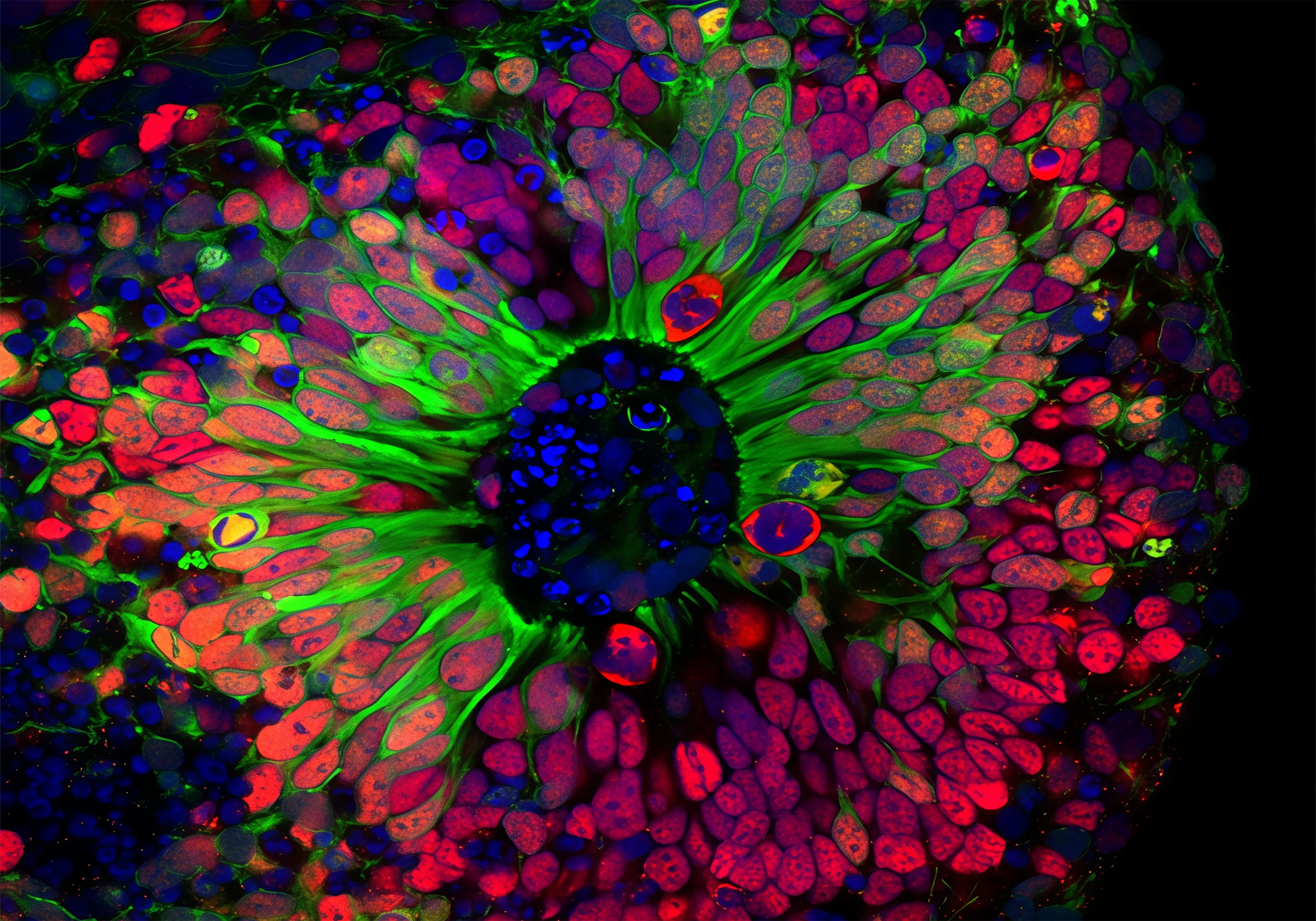
Génétique et physiopathologie de l'épilespise ; Institut du Cerveau
Marina Maletic
Marina Maletic explore un organoïde cérébral issu de cellules de patients. Cette cohabitation entre cellules saines et mutées révèle les origines invisibles de certaines formes d’épilepsie, ouvrant la voie à des thérapies personnalisées.
Epilepsie